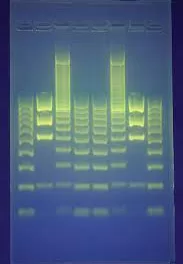In a significant breakthrough for asthma treatment, researchers from the Keck School of Medicine of USC have uncovered a pivotal role that iron plays in driving inflammation during allergic asthma attacks. Their findings, published in the journal Science Translational Medicine, suggest that blocking or limiting iron could mitigate the severity of symptoms, offering hope for millions of asthma sufferers worldwide.
Allergic asthma, characterized by airway inflammation and constriction, is often triggered by immune cells called group 2 innate lymphoid cells (ILC2s) becoming overactive. However, the precise mechanisms underlying this process have remained elusive until now.
The research team, led by Dr. Benjamin Hurrell, discovered that ILC2s depend on iron to fuel their activity, shedding light on the link between iron metabolism and asthma exacerbation. By conducting experiments on both human cells and mouse models, they demonstrated that inhibiting iron uptake in ILC2s reduced the severity of asthma symptoms in mice. Moreover, their analysis of human cells revealed a correlation between increased ILC2 activity, iron uptake, and asthma severity.
“This is the first time it’s been shown that iron is an important metabolic regulator of pulmonary immune cells such as ILC2s, allowing them to generate energy. That’s helpful for treating disease because targeting a cell’s energy can allow us to selectively increase or decrease its function,” explained Dr. Hurrell.
The team’s findings not only offer new insights into the pathophysiology of allergic asthma but also pave the way for potential therapeutic interventions. Unlike existing treatments like steroid inhalers, which primarily alleviate symptoms, targeting iron metabolism could address the underlying cause of the disease.
Dr. Omid Akbari, the study’s senior author, emphasized the significance of this approach: “We have limited drugs besides steroids for patients with asthma. Steroids inhalers and pills can control symptoms to keep patients alive, but they are not attacking the underlying pathophysiology of the disease. We hope our research can ultimately offer a better solution.”
The researchers elucidated the role of iron through a series of mechanistic studies, demonstrating that iron uptake is crucial for ILC2 activation and function. By using iron chelators, substances that bind to iron and restrict its availability, they were able to reduce ILC2 activity and lung inflammation in mouse models.
Furthermore, their analysis of patient samples confirmed the clinical relevance of their findings, showing that blocking iron uptake decreased ILC2 activation in cells from asthma patients. This direct link between iron metabolism and asthma severity underscores the potential of targeting iron as a therapeutic strategy.
Looking ahead, the researchers aim to develop targeted therapies that can selectively modulate ILC2 activity in the lungs without affecting systemic iron levels. Such interventions could not only revolutionize asthma treatment but also hold promise for other allergic diseases characterized by ILC2 hyperactivity.
The study was supported by grants from the National Institutes of Health, highlighting the importance of continued investment in research aimed at unraveling the complexities of allergic diseases and identifying novel therapeutic targets.












